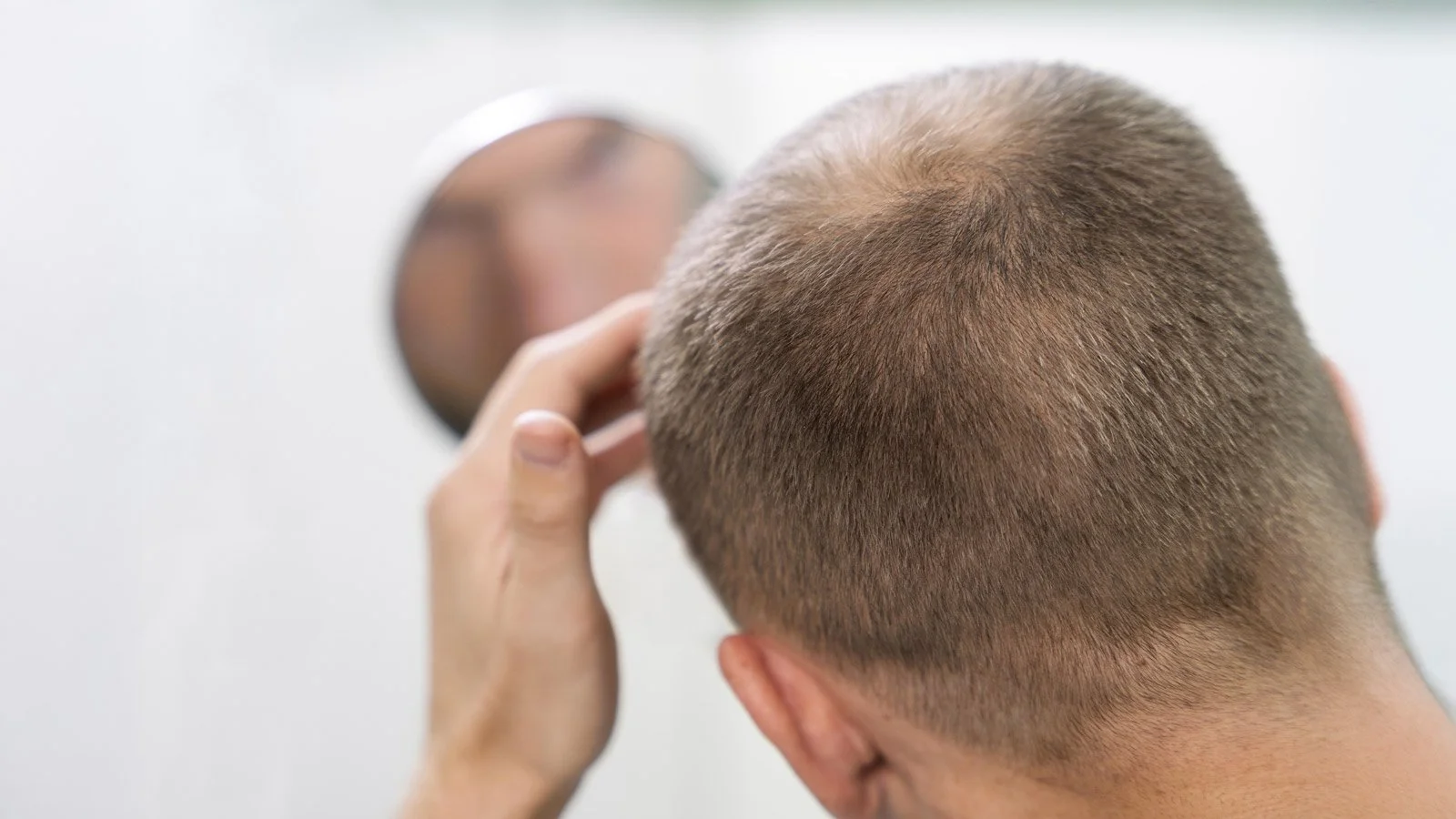Five Early Hair Loss Signs: Recognising Pattern Baldness
Five Early Signs of Hair Loss You Might Be Ignoring
Hair loss develops gradually, with follicular decline often progressing silently for months before visible thinning becomes apparent. The most challenging aspect of pattern hair loss isn't the eventual thinning itself but rather the extended period during which significant follicular damage accumulates unnoticed. When diagnosis finally occurs, patients frequently realise multiple warning signs existed long before they recognised the pattern.
Understanding these early indicators enables intervention whilst follicles retain greater regenerative capacity. The following five signs suggest pattern hair loss has begun, even when overall density appears normal.
Recognising the Early Warning Patterns
Progressively finer hair texture:
Hair at the crown and vertex gradually becomes finer whilst occipital hair maintains its original diameter and strength. This textural change reflects follicular miniaturisation, where gradually shrinking follicles produce increasingly thin shafts. Factors including stress, hormonal changes and metabolic issues accelerate this miniaturisation process, causing hair to become weaker and more prone to breakage.
Increased scalp oiliness with inflammation:
Sebum production increases noticeably, with hair appearing oily within hours of washing. This often accompanies scalp itching, redness or tender bumps. These symptoms don't merely reflect inadequate cleansing or sleep deprivation—they frequently represent early inflammatory responses associated with follicular decline. Untreated scalp microenvironment imbalances can progress to folliculitis, accelerating hair loss progression.
Hairline recession:
Pattern hair loss typically affects the hairline first, with decreased density at the temporal regions becoming noticeable. Male pattern baldness creates characteristic recession at both temples, eventually forming an M-shaped hairline. Whilst women can temporarily mask early recession with styling, the progressive nature of follicular decline continues regardless of cosmetic management.
Widening central part:
The midline part gradually widens, with scalp becoming increasingly visible through thinning hair. This pattern proves particularly common in female pattern hair loss, representing severity comparable to male temporal recession. The widening progresses silently, often becoming apparent only when others comment on the visible scalp or when lighting makes the thinning undeniable.
Increased daily shedding:
Dermatological guidelines indicate up to 100 hairs shed daily represents normal physiological turnover. Persistent shedding exceeding this threshold—evidenced by accumulating hair in drains, on brushes, across pillows and floors—signals follicular dysfunction. When excessive shedding continues for extended periods, it typically indicates follicles have entered a declining phase where hair production cannot match loss rates.
These patterns represent follicular distress signals. When warning signs go unrecognised or ignored, progressive miniaturisation continues until follicles lose regenerative capacity entirely.
Why Traditional Approaches Show Limitations
Many people try multiple conventional interventions before achieving satisfactory results. Surgical hair transplantation redistributes existing follicles at substantial cost, with pricing calculated per follicular unit. The procedure addresses coverage but cannot increase total follicular capacity, making preservation of existing follicles economically as well as medically valuable.
Pharmaceutical approaches including minoxidil and finasteride require daily application with variable results and potential side effects. Scalp irritation and redness occur commonly. Effectiveness varies considerably between individuals, with outcomes remaining uncertain despite consistent long-term use. Treatment discontinuation typically results in renewed hair loss, as these medications support existing function rather than restoring lost capacity.
Newer technologies including exosome therapy and growth factor treatments face challenges with signal strength and consistency. Initial responses may seem promising, but growth signals often prove difficult to sustain, causing regenerative processes to stall before achieving meaningful restoration.
These limitations share a common factor: conventional approaches don't address the fundamental cellular deficit underlying follicular decline. Follicular function depends on dermal papilla cells located at each follicle's base. These cells direct follicular activity through growth signal secretion and microenvironment regulation. When dermal papilla cell populations decline or lose function, follicles cannot maintain normal cycling regardless of external support.
Dermal papilla cell regeneration technology addresses this biological foundation directly. The approach extracts healthy dermal papilla cells, expands populations through laboratory culture, then reintroduces them to areas of follicular decline. This restores the cellular command centre that governs follicular function, reactivating dormant follicles and enabling sustained regeneration rather than temporary symptom management.
Effective intervention targets the core mechanism. Dermal papilla cell technology represents advancement from external stimulation to fundamental biological restoration—comparable to replacing a failing engine rather than repeatedly adding fuel. By restoring the cellular populations that determine follicular capacity, this approach enables follicles to resume healthy, self-sustaining function.
ReGrowth Biotech, powered by Re-Stem Biotech's cellular therapy expertise, specialises in advanced hair restoration treatments that harness the body's natural regenerative capabilities. Our D.P.G. technology represents the evolution from traditional hair treatments to cellular regeneration approaches.
Important Notice: This content is provided for educational purposes and general information. Individual treatment outcomes may vary, and all medical decisions should be made in consultation with qualified healthcare professionals. The information presented does not constitute medical advice or guarantees regarding treatment results.



